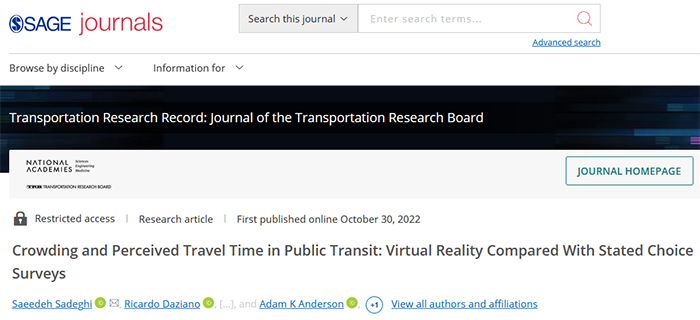Saeedeh Sadeghi, Ricardo Daziano, So-Yeon Yoon, Adam K Anderson
Abstract
In-vehicle crowding and travel time are two important factors that determine passenger transportation preferences in public transit. A widely used approach to obtain the relative magnitude of these preferences is the stated choice (SC) survey. However, such imaginary choice situations do not capture automatic cognitive biases during the immersive experience of trips. In a previous study, we used virtual reality (VR) technology to simulate short immersive virtual subway trips with different levels of crowding. We asked participants to indicate the level of pleasantness and estimate the duration of each trip. In this paper, we compare and contrast perceptions of participants in the VR task with preferences in a SC survey taken from the same participants. The SC task consisted of two-alternative choice scenarios, asking for preference between more crowded shorter trips and less crowded longer trips. Discrete choice modeling was used to analyze the SC results. There are two main findings. First, individuals who perceived passenger density more negatively in the SC task also felt more negatively during higher density VR trips. This confirms that hypothetical SC surveys can reflect feelings induced by crowding during more realistic experiences. Secondly, a more crowded VR trip was perceived as longer compared with a less crowded trip, whereas this effect was not reflected in the SC task. It therefore suggests that SC surveys may not be capable of capturing systematic temporal biases induced by crowding. Results shed light on potential caveats of the SC surveys and introduce an avenue for the use of VR in passenger preference research.
